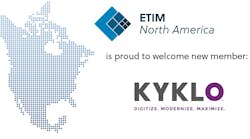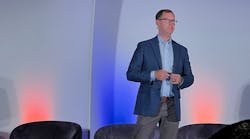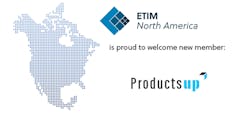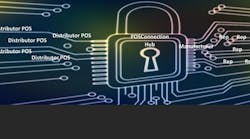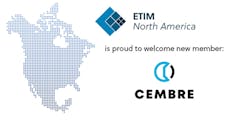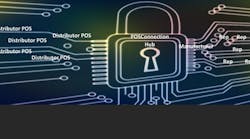Don't despair if you can't recall the name of the company that supports your distribution business software. There have been so many distribution software acquisitions and name changes that one almost needs a scorecard to keep track of it all.
Among the many mergers, three hit particularly close to the electrical industry in 2004. Prophet 21, Yardley, Pa., acquired TradePower/Trade Service Systems, Blue Bell, Pa., in August. For more than 20 years, Trade Service Systems focused almost exclusively on electrical distribution with approximately 300 electrical wholesalers using its Array software.
This year, too, Infor Global Solutions, Alpharetta, Ga., which changed its name in September from Agilisys, acquired NxTrend, Colorado Springs, Colo. More than 300 electrical distributors use SX Enterprise, the software NxTrend developed. Infor also picked up a number of electrical wholesaler customers using FACTS and TakeStock software when it purchased Aperum, Duluth, Ga., in August. (Interestingly, Aperum went through a name change, too, when it switched from Software Solutions to Aperum in January 2003.)
Not quite as recently, Intuit Inc., Mountain View, Calif., acquired Eclipse Inc., Shelton, Conn., in July 2002. Intuit operates Eclipse as a separate unit doing business as Intuit Eclipse. With approximately 600 customers using Eclipse software, 75 percent are electrical or plumbing distributors.
“Electrical and plumbing has pretty much been our playground. That's been our focus,” said Sasan Goodarzi, president of Eclipse and vice president of Intuit's Industry Specific Solutions.
Moving away from electrical-specific software, Prophet 21, Infor Global Solutions and Speedware Corp., Montreal, acquired other distribution software companies this year, too, but the software packages among those companies are marketed primarily toward other niches within the distribution arena. Speedware acquired Prelude Systems, Addison, Texas, which had started to build a presence in the electrical market.
Microsoft's foray into the distribution software market is worth mentioning, too. In April 2001, the Redmond, Wa.-based company acquired Great Plains Software Inc. of Fargo, N.D., marking Microsoft's entry into the small and medium business applications market. To the Great Plains accounting suite, Microsoft added inventory solutions. The distribution venture now called Microsoft Business Solutions is making inroads within the distribution arena, but some near the electrical segment of the market say that Microsoft Business Solutions is suited only for smaller electrical wholesalers.
“Smaller distributors might go with more of an accounting package than a distribution specific package,” said Doug Levin, Prophet 21 executive vice president.
“It's a great thing for accounting, payroll, getting an invoice out,” said consultant Allen Ray, president of Allen Ray Associates Ltd., Arlington, Texas. “But it does not have all of the built-in function right now that allows a distributor to actually run his complete business through it. Meaning inventory, when to order, how much to order, inventory analysis and stuff like that.”
Those close to electrical distribution software say all this consolidation and acquisition activity is a natural evolution of a maturing industry looking to grow market share and hastened perhaps by the recent recession.
“The last good sales year for many of these companies was 1999,” said Bob Wittig, who sold distribution software to electrical distributors for more than 20 years, the last 13 years with Trade Service Systems/Trade Power. “The combination of 9/11 and the downturn in economy has weakened many of these companies, and they've become targets for acquisitions,” said Wittig, who joined Independent Electric Supply Inc., San Carlos, Calif., as corporate information technology manager early in 2004.
Software vendors can't survive on just the recurring revenue obtained from the existing client base, said Wittig. “You have to be generating a significant amount of new sales activity on an annual basis, and that just hasn't been happening for enough companies.”
Certainly, most distributors haven't had much extra cash to spend on upgrading or implementing new software systems since the century's turn. With margins tight in good years, the electrical industry's negative growth in 2001 and 2002 didn't help their distribution software providers' bottom lines either.
“It's a natural progression,” said Matt Turner, marketing director, Infor Distribution Essentials, Infor Global Solution's distribution division. “If you look at the airline industry in the 1970s, you'd see a lot of smaller players. Today, through mergers and acquisitions, it's been reduced down to a few key players because of economies of scale.”
More than 4,500 distribution companies use one of Infor's distribution software solutions: Enspire, FACTS and TakeStock for small to medium distributors; and Application Plus, commerce@work and SX Enterprise for medium to large distributors.
“We're trying to fill out a product footprint by industry and also by size,” said Turner. “There are a lot of economies of scale you get through shared development resources that can be shared across all the customer bases.”
With so many software companies that cater to distributors going through similar software development but often serving a few small niches within the larger distribution arena, it makes sense for some of them to merge, said Turner.
Developing and enhancing software is a costly endeavor, points out Prophet 21's Levin. Prophet 21 invested more than $30 million in the development of its newest software, CommerceCenter, in the late '90s. Annually, Prophet 21 invests more than $16 million on research and development.
Prophet 21 has made five acquisitions in the last year and a half. With 3,400 distribution company customers, 600 are electrical wholesalers.
Prophet 21 continues to support and develop the Array software package. “We're working on what feature sets the customers would like to see in Array 11,” said Levin. The current release is Array 10. “We will continue to invest in the Array product as long as there is customer demand for it, which we think will be many, many years.”
A THREE-HORSE RACE
In addition to the Array product, Prophet 21 acquired a product called Trade Source from Trade Power/Trade Service Systems.
“The product was very, very early in its development cycle,” said Levin.
Trade Source, in essence, was to be a new and improved version of Array that included a relational database application as well as other major improvements.
“They (Trade Service Systems) didn't get very far down that road,” said Steve Shuman, president of the Array Users Group (AUG) as well as vice president of Nelson Electric Supply, Racine, Wis. “They were rewriting the logic from Cobal to Java and the database from CISAM to DB/2. They just didn't get very far down that road.”
Trade Source had been in various stages of development for about four years, said Les Johnson, an AUG board member and chief information officer, North Coast Electric Co., Bellevue, Wash. Thirty-seven electrical distributors that use Array had already made financial commitments toward implementing Trade Source at the time of the acquisition. Some were running the software on dual mode, running both the DB/2 database as well as the older CISAM database, but all were waiting for additional features as well.
At the time of acquisition, Prophet 21 changed the Trade Source product name to Array DB/2. Prophet 21 continues to support Array DB/2 and is enhancing certain modules. Additionally, all of the Array 11 enhancements will be incorporated into the Array DB/2 product.
Still, for many of the 37 electrical distributors who had made a commitment to the Trade Source product, Array DB/2 will not meet their future needs.
“The pent-up demand in that users group resulted in numerous e-mails to the Array Users Group's board requesting assistance in choosing an alternative software,” said Shuman. “Many of those people were waiting for Trade Source or else they would probably have done something else. The AUG board took it as a mandate to help the AUG members shop for systems.”
“When distributors get ready to go and buy a new piece of software, it's almost like open-heart surgery without anesthesia,” said consultant Allen Ray. A distributor knows that a change needs to be made but dreads the process because it disturbs day-to-day business, said Ray.
“If you're going to change your system, there's no reason not to look around,” said Shuman. “We looked at all of the possible software that was out there and narrowed it to a short list,” said Shuman.
Three software packages made the AUG board's list: Intuit's Solar Eclipse, Infor's SX Enterprise and Prophet 21's CommerceCenter.
To make the AUG board's list, the software had to have:
-
A strong base of electrical-distributor users, including large electrical distributors;
-
A relational database, which allows great flexibility in posing queries;
-
A graphical user interface; and
-
Open architecture, or at least plans for an open architecture, which allows the system to be connected easily to devices and programs made by other software manufacturers. Open architecture makes it possible for an electrical distributor to communicate with other business' systems.
At press time, the AUG board hoped to have negotiated group pricing with Intuit Eclipse, Infor Global Solutions and Prophet 21 by the end of December. In January, AUG intends to host Web demos of various parts of the three contenders' systems and in February, plans to host side-by-side comparisons at a hotel in Chicago.
The AUG board has also tapped Brown Smith Wallace, a St. Louis-based CPA and business-consulting firm, to help the AUG board with its request for proposals and to assist individual electrical distributors as they work through contractual agreements and negotiate with their software provider of choice.
THE NEXT FRONTIER
What does the future hold?
“The next big frontier is going to be complete back office integration,” said Ray. “Meaning that most ERP systems are smart enough to be able to predict when to buy inventory and they're smart enough to hook up wirelessly in a warehouse.”
As electrical distributors move forward, integration between distributors and their customers will also be key.
The technology? “It's really there,” said Levin. “It's getting people to adopt it.”
ASSESSING YOUR SOFTWARE SITUATION
Electrical distributors assessing their business software might want to ask themselves the following questions.
Are you getting full utilization out of your current software system?
“A lot of times you'll have a distributor that's using only 20 to 30 percent,” said Doug Levin, executive vice president, Prophet 21. “They could invest $4,000 or $5,000 in education and get that up to 60 percent or 70 percent.” The education won't be lost if the distributor eventually goes to another system because most of the education is around the business processes, said Levin. “But instead of doing that, they'll go spend $200,000 on a new system and still not invest in the education. I'd rather a customer spend $5,000 today if it will get them a $100,000 return than to spend $100,000 to just get them that same $100,000 return.”
What are your company's long-term business plans, and how does your software system support (or not support) those plans?
“Electrical distributors are very, very operational intensive, transaction-heavy businesses,” said Sasan Goodarzi, president of Eclipse and vice president of Intuit's Industry Specific Solutions. “They heavily rely on technology to run their businesses. Are they partnering with a company that's really focused on a continuous basis on understanding what their unmet needs are and ultimately providing a solution to meet those? Can the software company ultimately help you grow, grow with you, help you expand your margins over the next 15 to 20 years vs. just the next two years.”
How does your business software help reduce back-office cost?
Electronic integration with customers' and vendors' business systems can cut down on back-office business costs and streamline your business operations. What's standing in your way to becoming paperless?
How does your software perform when it comes its “abilities”? There are four abilities to ponder (plus performance).
-
Availability. The ability to be open 24 hours a day 365 days a year.
- Reliability
You have a guarantee that your data is going to be correct or won't be corrupted because of the processing of powering and computing.
- Scalability
You can start with a one-location distribution system and expand it to a nationwide system without having to change anything except add more hardware.
- Flexibility
Whatever your customers request of you, you have a better chance of responding to in a timely fashion.
- Performance
A guarantee that no matter what load is on the system, you're able to respond in sub-second response times.
ELECTRICAL DISTRIBUTION SOFTWARE ACQUIRERS
Infor Global Solutions, Alpharetta, Ga., has 27 locations, more than 1,600 employees, and customers in 31 countries. After numerous acquisitions over the last couple of years, the supplier of enterprise software solutions changed its name from Agilisys to Infor Global Solutions in September “to provide the company with a strong global brand to support continued international growth.”
Acquisitions in 2004 include NxTrend, Aperum (formerly Software Solutions) and daly.commerce. Five years ago, those three companies collectively served about 300 electrical distributors. Today, the former NxTrend software, SX Enterprise, alone serves more than 300 electrical distributors.
Recent Acquisitions:
March 2004. Acquires daly.commerce, Providence, R.I. Infor continues to market commerce@work, which daly.commerce developed, to medium to large distributors.
June 2004. Acquires NxTrend, Colorado Spring, Colo. In May 2003, NxTrend acquired Dimasys Software, the developer of Enspire. Today, Infor markets Enspire to small to medium distributors and SX Enterprise, which was developed by NxTrend, to medium to large distributors.
August 2004. Acquires Aperum, Duluth, Ga. Aperum changed its name from Software Solutions Inc. in January 2003. Its software applications included TakeStock and FACTS, which Infor Global Solutions now markets to small to medium distributors.
Prophet 21, Yardley, Pa., has made five acquisitions in the last year and a half, but the one most relevant to the electrical industry is its August 2004 acquisition of TradePower/Trade Service Systems, Blue Bell, Pa.
With the addition of the near-300 users of Trade Service Systems' Array software, Prophet 21 now serves more than 600 electrical-distributor customers.
Prophet 21 continues to support and develop the Array software package.
“We have a newer product called CommerceCenter that we believe would provide a lot more financial benefit to our customers, but we don't want them to think that they need go to it because Array is not having a long life,” said Doug Levin, Prophet 21 executive vice president. “We want them to go to it because it will make their businesses stronger.”
Intuit Inc., Mountain View, Calif., acquired 11-year-old Eclipse Inc. in July 2002. Eclipse operates as a separate unit doing business as Intuit Eclipse, with headquarters in Shelton, Conn. The latest release of its enterprise resource software, Eclipse 8.0, includes a new graphical user interface called Solar Eclipse.
